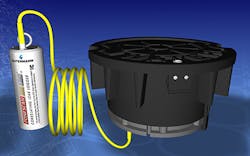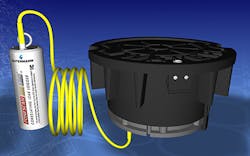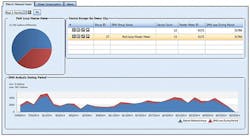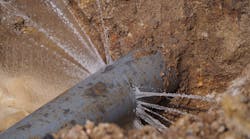Leakage is one of the primary concerns for water utilities worldwide, yet North American investment in water loss has, historically, not addressed the problem with sufficient urgency or expertise.
Slowly, the regulatory lag to efficiently control leakage is beginning to shift. Currently, 29 states in the U.S. have at least one agency that either mandates or incentivizes some form of water loss control.
Aging distribution systems, economics, water scarcity, and regulatory pressure incentivize water loss control programs in light of costly replacement and repair decisions. Agencies are driven to evaluate their losses and invest in economic leakage management solutions as water resources become scarcer and more expensive.
Water loss control can be challenging, confusing and time consuming. Currently, the industry lacks the maturity to effectively track, record, and proactively find leaks. Effective water loss control requires a multi-step process, including:
- Water audit (also known as a water balance)
- Component analysis
- Intervention
Each water loss control phase is data heavy, requires accuracy and can be labor intensive. Data quality and collection prove the greatest challenge for utilities when completing a water audit for the first time. System input and customer volume inaccuracy is a primary flaw due to meter inaccuracy and unmetered usage. Moreover, executing targeted leak control can be an arduous task. Utilities with manual meter readers identify increasing the speed of repairing leaks and setting up district metered areas as extremely time-consuming.
As water loss control and leak mitigation gain traction as an industry standard over the next decade, increasing data validity and minimizing the labor intensity associated with data collection will become a main objective of reducing non-revenue water (NRW). First, utilities will require accurate metering at the production and the customer level in order to obtain a good water balance validity score. After, as utilities transition past the audit phase, they will have to reduce labor-intensive leakage intervention and monitoring solutions.
The spectrum of water loss reduction strategies varies. Some states mandate that all public water systems conduct annual water audits and follow leak abatement best management practices. California incentivizes water loss control by attaching associated NRW reduction requirements to grant application processes. Other states, such as Connecticut and Nevada, require water loss mitigation within the broader water supply and conservation plans.
An effective water loss control strategy requires a multistep process. First, utilities must conduct a "top-down" water audit to quantify and track water distribution losses. Second, the agencies should conduct a Component Analysis to identify where the leaks are occurring and the leakage type in order to plan for an efficient and economic leakage control intervention. Once the utility has determined the economically appropriate means to reduce overall water loss, it is ready for the intervention stage. Increasing the speed of repairing leaks and proactive leak detection are two effective strategies to manage real losses.
This is an excerpt from Aclara's white paper, "Using Advanced Metering Infrastructure to Control Water Loss." To download the full article, visit www.aclara.com/whitepaper-landing.





